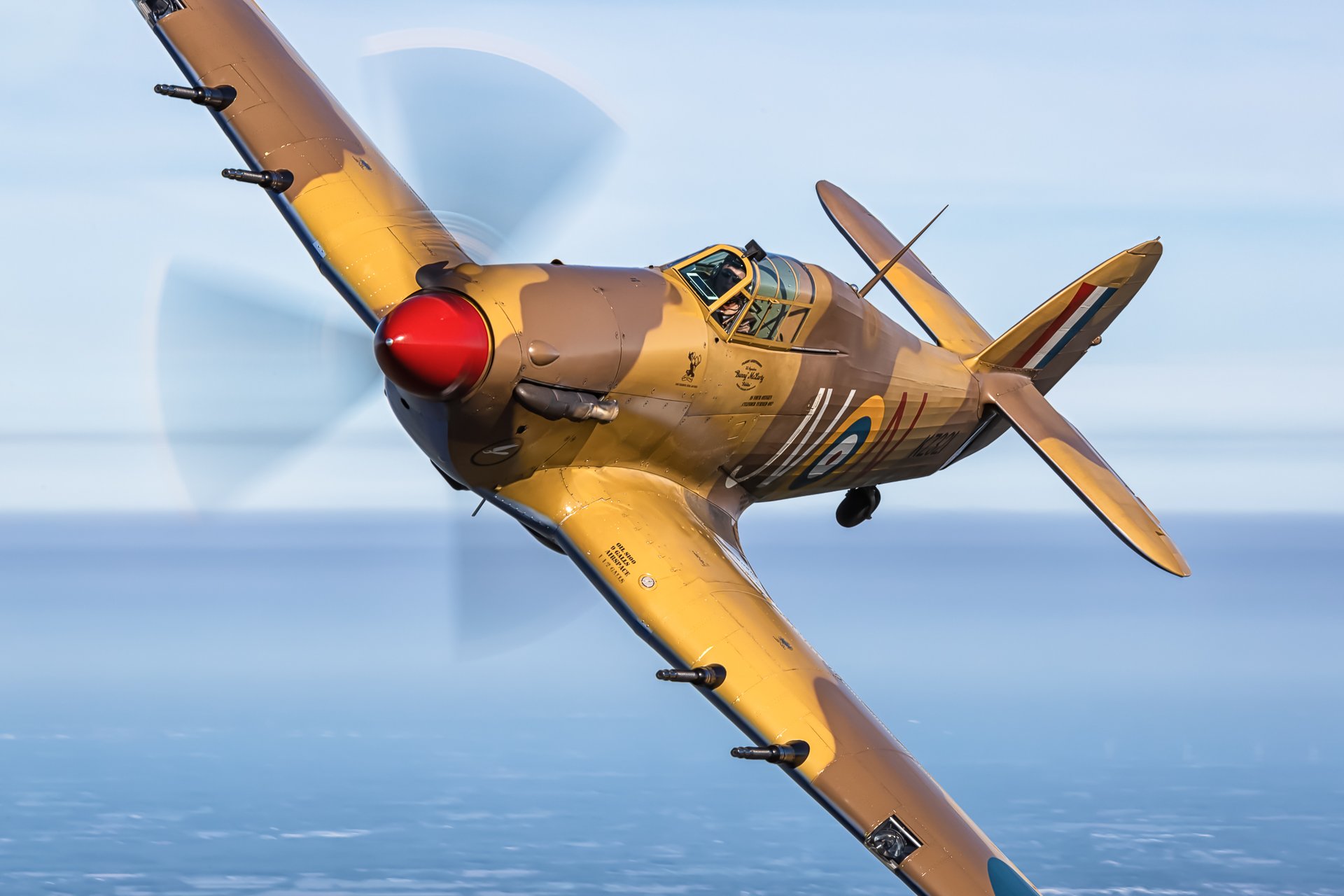
The Flight Lieutenant Donald “Bunny” McLarty
HAWKER HURRICANE IV
Jaco Spruyt Photo
Michael U. Potter Historic Aircraft Collection
HAWKER HURRICANE Mk IV
The Vintage Wings of Canada Hawker Hurricane IV was painted in the Desert Air Force markings of the Royal Air Force’s 6 Squadron, flying ground support in the North African Campaign. It was dedicated to a British Argentinian by the name of Donald McLarty who travelled to Canada from Argentina to enlist in the RCAF. McLarty was shot down in North Africa and imprisoned in Italy. Along with a friend Ray Sherk, “Bunny” escaped when Italy capitulated and made his way back to Great Britain. After the war, McLarty was involved in Canadian aerial survey work and made his home on Ottawa.
The Spitfire will forever be associated in the public's mind with the Battle of Britain, but it was the Hawker Hurricane that shouldered the lion's share of the fighting and the eventual victory during that titanic aerial struggle. Day after day, the exhausted RAF and Commonwealth pilots from 32 Hurricane-equipped squadrons rose from the airfields of East Anglia to meet and eventually defeat the Luftwaffe, thereby making this aircraft forever synonymous with the “Few”.
The “Hurry” was a design of many firsts for the Royal Air Force. The Hurricane was the first monoplane fighter aircraft of the RAF, its first fighter with both an enclosed cockpit and retractable landing gear as well as the first to exceed 300 mph in level flight. While it may have been first, it proved to be an exceptional design which could be adapted to just about any role needed from a single seat aircraft, from interceptor to naval reconnaissance to ground attack. The Hurricane Mk IV of Vintage Wings of Canada was painted in the markings of RAF 6 Squadron, “The Flying Tin Openers”, which operated the Hurry in the “tank- busting” and ground attack role. Many Canadian pilots flew the cannon-equipped tank-buster variant with 6 Sqn. on operations in North Africa.
The Hurricane was sold in 2018 and re-registered as OO-HUR to be based at Antwerp Airport, still In the markings of No.6 Squadron on war service in Italy. Repainted as JX-E (BZ150) in the colours of Czech pilot Karel Kuttlewascher, and will move to Tocná Airport, Prague 12, Czech Republic.
Walter Van Bel Photo
Walter Van Bel Photo
Jaco Spruyt Photo
Bruno Laplante Photo
Peter Handley Photo
Eric Dumigan Photo
Peter Handley Photo
Peter Handley Photo
Peter Handley Photo
Richard Mallory Allnutt Photo











